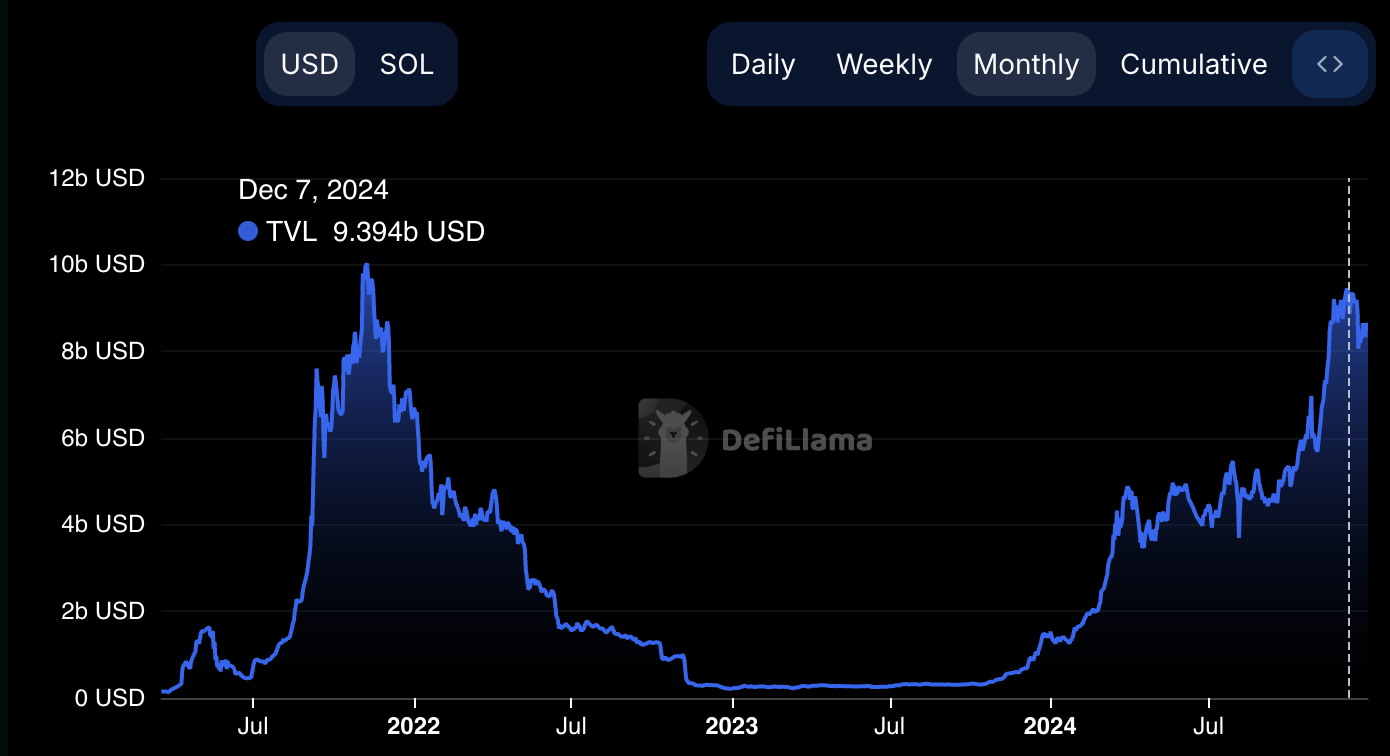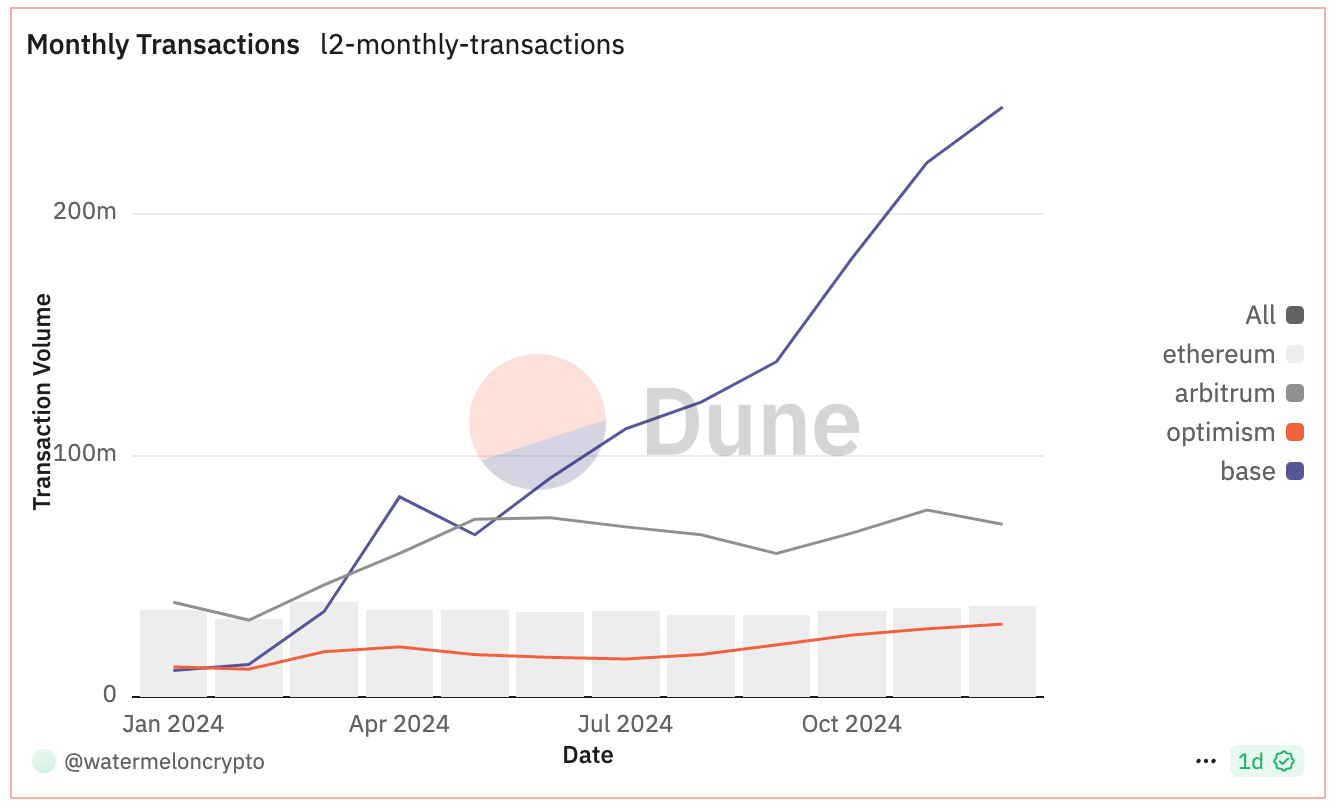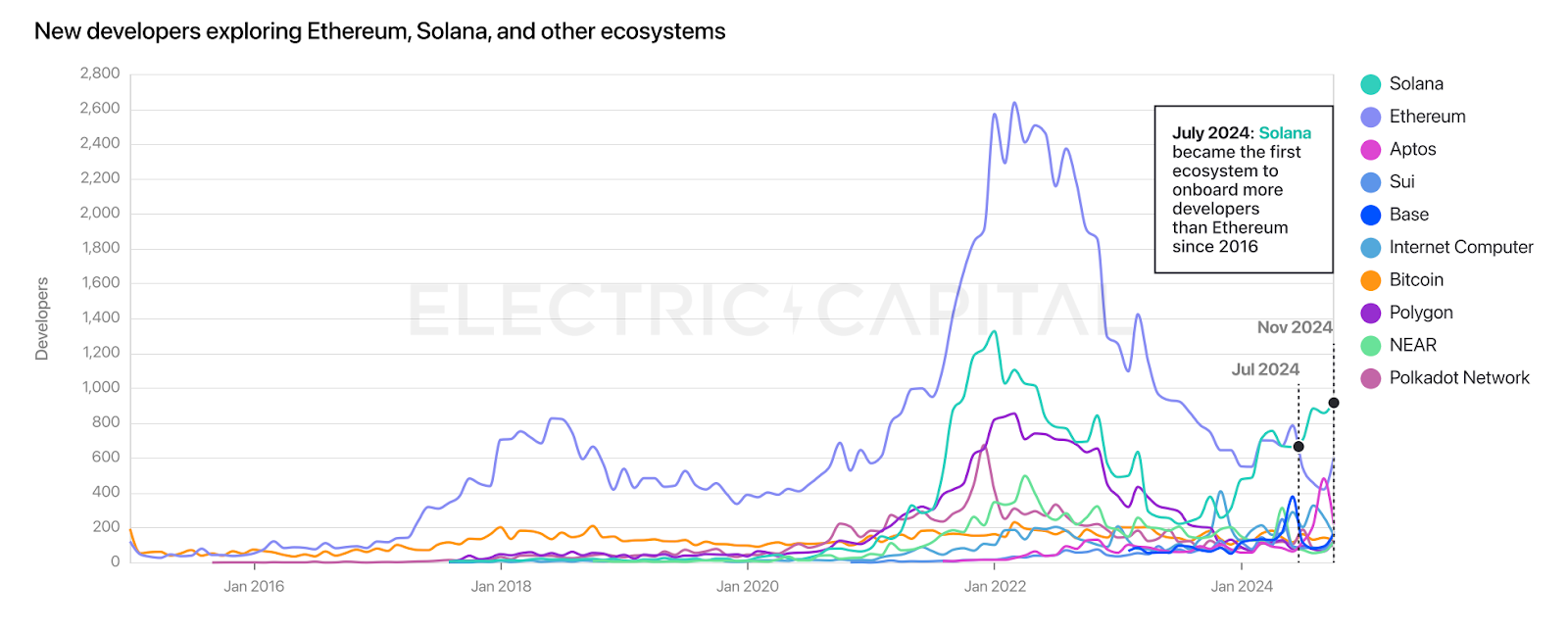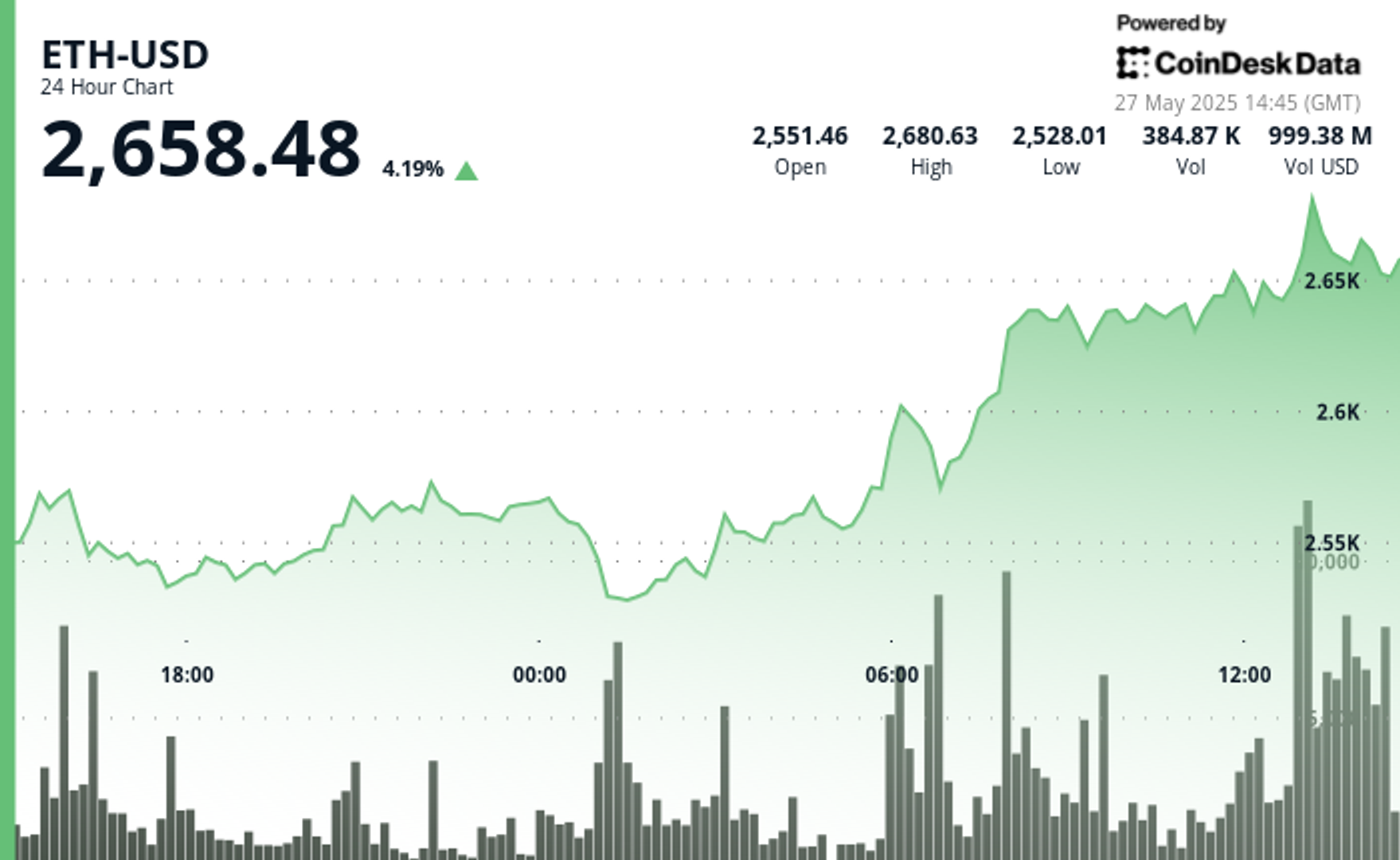Uncategorized
A Year of Crypto Tech In Review

This special edition of the Protocol looks back at 2024’s groundbreaking developments and forward to what the coming year might bring for blockchain technology.
Let’s dive into the milestones, trends, and predictions shaping the next era of crypto.
This article is featured in the latest issue of The Protocol, our weekly newsletter exploring the tech behind crypto, one block at a time. Sign up here to get it in your inbox every Wednesday.
1. A Look Back: Top Crypto Tech Milestones of 2024
Ethereum’s Duncun Upgrade: 2024 marked Ethereum’s most significant network upgrade yet. Ethereum activated the Cancun-Deneb (Dencun) upgrade, a landmark improvement designed to enhance scalability and reduce data fees, marking a pivotal step in the network’s evolution. Duncun introduced proto-danksharding, a mechanism aimed at lowering costs for Layer-2 rollups by simplifying data availability and improving transaction throughput. The changes, though immensely debated, aimed to benefit developers and pave the way for further innovations in Ethereum’s roadmap, reinforcing its position as the leading smart contract platform.
Solana Locks in Value: Solana’s DeFi TVL hit $9 billion in total value locked (TVL) for the first time in three years, with its DeFi ecosystem experiencing even more growth. This achievement reflects increased user engagement and the expansion of decentralized applications on the platform. This growth was significantly helped by institutional adoption and major integrations. Financial giants like Franklin Templeton and Société Générale leveraged Solana for tokenized asset projects. Solana also expanded its reach with Robinhood adding SOL to its trading platform and Cboe Global Markets filing for Solana-linked ETFs, signaling increased confidence in its infrastructure.

Quantum Computing’s Warning Bell: Google’s advancements in quantum computing, particularly with its revolutionary quantum chip, raised alarms within the crypto community about the potential threats to blockchain security. The chip’s ability to solve problems far beyond the reach of classical computers reignited debates around Bitcoin’s reliance on traditional encryption methods and the broader implications for the crypto ecosystem. Experts emphasized the urgency of transitioning to quantum-resistant encryption to safeguard cryptocurrencies against future vulnerabilities. While current quantum computers are not yet capable of compromising blockchain networks, Google’s progress underscored the need for proactive measures to ensure the long-term security and resilience of digital assets.
Layer-2 Adoption Soars: Layer-2 adoption surged as projects like Arbitrum, Optimism, and Base played pivotal roles in addressing Ethereum’s scalability challenges. Arbitrum continued to dominate the Layer-2 ecosystem, crossing 1 billion in transactions, driven by its strong developer support and DeFi integrations. Optimism continued to expand its influence with its OP Stack technology, which enable modular Layer-2 solutions and foster ecosystem-wide collaboration through its integration into Optimism’s Superchain. Base, a Layer-2 incubated by Coinbase, gained significant traction as it leveraged Coinbase’s extensive user base and on-ramps, with Franklin Templeton becoming the first asset manager to launch a tokenized treasury fund on the network.

DeFi Leaders Innovate: Aave became the focus of a new fund launched by Grayscale Investments in October, providing institutional and accredited investors with exposure to its governance token (AAVE) through a traditional investment vehicle; Uniswap Labs announced Unichain, a decentralized Layer-2 blockchain built with Optimism’s OP Stack, designed to enhance transaction speed, reduce costs, and improve cross-chain interoperability, with plans for a 2025 mainnet launch; and MakerDAO rebranded to Sky as part of its Endgame Plan, introducing new governance (SKY) and stablecoins (USDS), autonomous «Sky Stars,» deflationary tokenomics, and a roadmap for transitioning fully from MKR to SKY tokens.
2. Emerging Trends for 2025
AI x Blockchain: The integration of artificial intelligence and blockchain is set to revolutionize identity verification, predictive analytics, and smart contract automation — and, hopefully, curtail negative side effects of AI.
Regulated Crypto Hubs: Jurisdictions like Hong Kong, Dubai, and Singapore are positioning themselves as crypto-friendly innovation centers, attracting startups and institutional investors alike.
Interoperability Takes Center Stage: Cross-chain protocols will dominate development, enabling seamless asset transfers and collaboration between blockchain ecosystems.
3. Developer Spotlight: 2024 in Numbers
The Electric Capital Developer Report: The report highlighted sustained growth in blockchain development with a 35% increase in active developers. Ethereum, Solana, Polkadot, Base, and Polygon led the pack, showcasing their strong developer communities. Solana was the biggest draw for new developers, bringing in 7,625 new developers in 2024, surpassing Ethereum. Solana’s appeal, driven by its low fees, fast transactions and many memecoins, positions it as a formidable competitor in the smart contract arena.

4. What to Watch in 2025
Ethereum’s Pectra Upgrade: Ethereum’s upcoming Pectra upgrade has been split into two phases, Prague and Electra, to ensure a smoother rollout of key improvements to the consensus and execution layers. The Electra phase will enhance validator efficiency, bolster network security, and introduce improved mechanisms for managing validator exits.
Scaling Solutions: ZK-rollups and modular blockchains will drive the next wave of scalability, ensuring smoother user experiences. Zero-knowledge proofs are emerging as a transformative technology, enabling enhanced privacy and efficiency while paving the way for a future where blockchain networks can scale seamlessly without compromising decentralization.
Decentralized Identity: The rise of decentralized identity solutions could redefine how users interact with Web3 platforms, emphasizing privacy and ownership.These systems leverage blockchain technology to give users control over their personal data, allowing them to verify their identities without relying on centralized authorities.
5. Final Thought
2024 set the stage for crypto’s next chapter, with breakthroughs in scalability, DeFi, and security shaping a transformative year ahead.
Uncategorized
Can Bitcoin Break Conference Curse at This Week’s Las Vegas Event?

As bitcoin BTC enters this week’s Bitcoin Conference in Las Vegas priced at roughly a record high above $109,000, traders and analysts are closely watching whether it what’s become a trend of poor performance after these events.
Historical data compiled by Galaxy Research across five prior conferences from San Francisco in 2019 to Nashville in 2024 reveals that bitcoin has generally fared poorly both during and especially after these gatherings.
For example, the 2019 event saw a 10% decline during the conference and BTC went on to tumble 24% over the following month. The 2022 conference in Miami showed a similar trajectory: down 1% during the event and a steep 29% slide in the month after. Both of those instances, however, occurred in the middle of bear markets.
Even in bull market years like 2023, though, price action remained flat or slightly negative.
The most recent 2024 conference in Nashville in July — which featured then-presidential candidate Donald Trump promising a strategic bitcoin reserve — posted a 4% gain during the event, but a fast 20% decline shortly after, coinciding with the unwinding of the yen carry trade that triggered a broader risk-off move across global markets.
The setup this year — which is set to feature current Vice President J.D. Vance — could be materially different as institutional engagement is rising. Still, with historical data stacked against it, bitcoin faces a psychological hurdle as much as a technical one. Conference weeks have become sell-the-news moments.

Uncategorized
Ethereum Surges 4% on Massive Volume as Institutional Interest Grows

Ethereum ETH has staged an impressive recovery in the past 24 hours, climbing 3.8% amid significant market volatility. The second-largest cryptocurrency found solid support at $2,530, where exceptional trading volume (242,521 ETH) created a clear bottoming pattern.
This was followed by a decisive breakout during the early trading hours, supported by massive volume surges exceeding 550,000 ETH that pushed prices above key resistance levels.
The recent price action confirms a short-term trend reversal, with ETH now trading above $2,575 after establishing new local highs. Institutional interest remains robust, with spot Ethereum ETFs recording $248 million in total net inflows over the past week, suggesting growing confidence from larger investors despite relatively subdued retail participation.
Market analysts point to the $2,800 level as a critical resistance zone where many investors who previously bought at that level may look to exit at break-even. However, with ETH breaking out of its recent consolidation pattern and the broader crypto market showing signs of strength, bulls are now targeting the $2,650-$2,745 range as the next significant hurdle.
Technical Analysis
- A clear bottoming pattern formed during the 01:00 hour with exceptionally high volume (242,521 ETH), establishing strong volume support.
- A decisive breakout occurred during the 06:00-07:00 hours with massive volume surges (553,348 ETH and 221,502 ETH respectively).
- The price action showed three distinct phases: initial consolidation (07:04-07:29), powerful breakout (07:30-07:32) with high volume spikes exceeding 7,000 ETH per minute, and sustained uptrend.
- The $2,600 level is now established as a new support zone with momentum indicators suggesting potential for further upside toward $2,650.
- High-volume support at $2,530 now serves as a critical floor for any retracements.
This technical analysis was conducted according to CoinDesk s research model analysing CoinDesk Data
Disclaimer: Parts of this article were generated with the assistance from AI tools and reviewed by our editorial team to ensure accuracy and adherence to our standards. For more information, see CoinDesk’s full AI Policy.
External References
- Bitcoin Sistemi, Ethereum (ETH) Continues Bullish Momentum – What’s Next? Here Are the Details, published May 26, 2025.
- CryptoPotato, Interesting Ethereum (ETH) Price Predictions as of Late, published May 26, 2025.
- CryptoPotato, Ethereum’s (ETH) Quiet Rally – Where Are the Retail Investors?, published May 26, 2025.
- NewsBTC, Ethereum Above $2,500 – Here’s Why Analysts Think $3,000 May Be Next, published May 27, 2025.
- CoinEdition, Ethereum Price Prediction for May 28, published May 27, 2025.
Uncategorized
SharpLink Gaming Soars 400% as Joseph Lubin’s Consensys Leads $425M Funding for ETH Treasury Strategy

Shares of sports marketing company SharpLink (SBET) rose 412% on Tuesday after it announced plans to create an Ethereum ETH treasury reserve strategy with involvement from the blockchain’s own co-founder, Joseph Lubin.
The Minneapolis-based firm, founded in 1995, is currently trading at $34.45, up from $7 Friday, with a market cap now of $23 million.
The company is raising roughly $425 million though a private investment in public equity (PIPE) offering. The proceeds will be used to buy ether, which will then serve as the primary treasury reserve asset.
Ethereum software developer Consensys, which was also co-founded by Lubin, was the lead investor with further participation by Pantera Capital, Galaxy Digital, and Ondo, among smaller names.
The offering is expected to close on May 29th, according to the release. Lubin will become chairman of the board of directors upon the closing.
SharpLink joins an increasing number of microcap companies trying to mimic the success of Strategy (MSTR), the first company to adopt a bitcoin BTC treasury strategy, resulting in an over 3,000% increase of its share price over the past five years.
Along those lines, Trump Media & Technology Group (DJT) Tuesday morning announced a $2.5 billion capital raise to begin a bitcoin treasury strategy.
-

 Fashion7 месяцев ago
Fashion7 месяцев agoThese \’90s fashion trends are making a comeback in 2017
-

 Entertainment7 месяцев ago
Entertainment7 месяцев agoThe final 6 \’Game of Thrones\’ episodes might feel like a full season
-

 Fashion7 месяцев ago
Fashion7 месяцев agoAccording to Dior Couture, this taboo fashion accessory is back
-

 Entertainment7 месяцев ago
Entertainment7 месяцев agoThe old and New Edition cast comes together to perform
-

 Business7 месяцев ago
Business7 месяцев agoUber and Lyft are finally available in all of New York State
-

 Sports7 месяцев ago
Sports7 месяцев agoPhillies\’ Aaron Altherr makes mind-boggling barehanded play
-

 Entertainment7 месяцев ago
Entertainment7 месяцев ago\’Better Call Saul\’ has been renewed for a fourth season
-

 Sports7 месяцев ago
Sports7 месяцев agoSteph Curry finally got the contract he deserves from the Warriors





